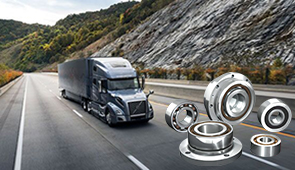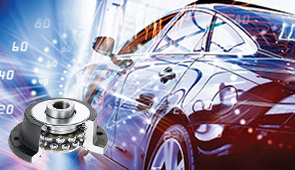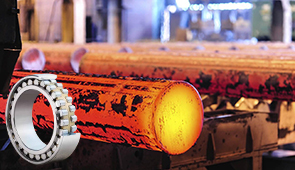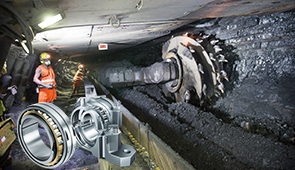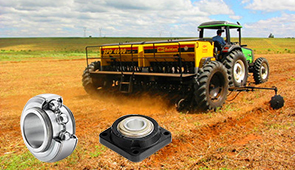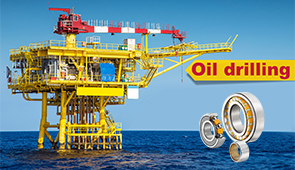The Ultimate Guide to Ball Bearing Rod Ends: Everything You Need to Know
Ball bearing rod ends are critical components in a wide range of mechanical systems, offering precision, durability, and versatility for various applications. Whether you’re an engineer designing high-performance machinery or a technician performing routine maintenance, understanding the intricacies of these components is essential for optimizing performance and reliability. This guide aims to provide a detailed exploration of ball bearing rod ends, covering their design, function, materials, and applications. From choosing the right type for your project to understanding the factors that influence their longevity and efficiency, this comprehensive article will equip you with the knowledge you need to make informed decisions and achieve optimal results. Let’s dive into the world of ball bearing rod ends and uncover everything you need to know about these indispensable mechanical components.
What is a Rod End Bearing?
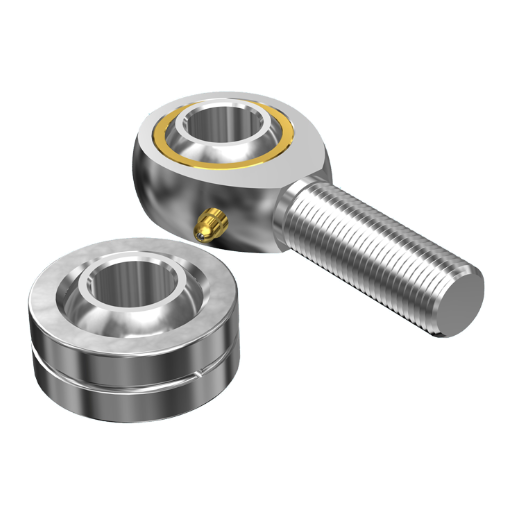
Understanding the Basics of Rod End Bearings
Rod end bearings or spherical rod ends are mechanical components for the transfer of motion and accommodation of misalignment in mechanical systems. Their primary characteristic is the eye-shaped head containing a spherical inner ring, which allows them to either rotate or oscillate. This motion makes rod ends critical in applications where alignment between components may dynamically change and including steering linkages, various industrial machinery, and control arms.
Bearing types are usually used in systems where adjustable and very secure joining of moving parts is required. They create a pivotal interface that compensates for angular misalignment and simultaneously reduces friction during movement. Along with resistance to loads, rod end bearings provide precise control over motion and last very well under harsh conditions. In terms of construction, these bearings are preferably made of steel, aluminum, or stainless steel to ensure strength, wear resistance, and corrosion resistance, respectively, based on the application’s requirements.
There are also two main configurations of rod end bearings based on thread-type internal design—male and female. Male rod ends have external threads, whereas their female counterparts have internal threads to provide compatibility with varying mounting needs. Additional options include self-lubricating or types requiring user maintenance, based on the lining or coating applied to the spherical surface itself. Appreciating these differences is very important to proper rod end bearing selection for any given project for maximized performance and reliability.
How Do Rod Ends Function?
Rod ends work as mechanical articulating joints, allowing misalignment and rotational movement between connected members. The housing includes a spherical inner ring that forms the major pivot; the design ensures that external forces applied from different directions are transferred properly while maintaining the overall system stability and alignment.
In essence, they are capable of making up for the angular misalignment that is very common in dynamic or load-related applications. By providing a pivot point, rod ends allow for smooth movement by relieving stresses that may build up due to non-perfect assembly alignment. This is particularly important when smooth, widely adjustable movement must be ensured by the means of the steering linkages or in control systems.
The ability of rod ends to support load types ranging from tensile, compressive, and dynamic levels varies. According to materials and design, they bear a high degree of vibration, corrosion, or temperature fluctuation. This makes them integral to systems in aerospace, automotive, and manufacturing industries, where aggressive environments combined with adaptive movement are crucial for operational realization.
Key Differences Between Rod Ends and Ball Bearings
Variants in function occur between rod ends and ball bearings in mechanical systems that offer certain performance qualities and applications. Design and usage are paramount in the distinction. The actuation mechanism in a rod end consists mostly of an eye-shaped head with a built-in plain spherical bearing. This type of bearing is well suited to handling loads that are partly misaligned, with much angular movement. The whole purpose of ball bearings is to reduce rotational friction whilst supporting radial and axial loads using rolling elements placed between races on the inside and outside.
The type of materials used in construction serves as another distinguishing point. Materials such as alloy steel, stainless steel, or aluminum are often used for making rod ends, which are then surface-treated to resist corrosion and wear in harsh environments. On the other hand, ball bearings are usually made out of high-grade steel or ceramic materials to ensure maximal durability and precision during rotating motion for an extended period of time.
Differences also exist in terms of operational environment and application. Rod ends operate under reduced rotational speed and full misalignment; hence used in linear motion systems, suspension linkages, and actuation mechanisms in aerospace, automotive, and heavy machinery. Ball bearings operate in high-speed rotational settings where precision and low friction are required, in electric motors, turbines, or conveyor systems.
Meanwhile, their maintenance requirements vary with the application. Rod ends with grease fittings may need periodic greasing in order to keep them moving smoothly. Meanwhile, ball bearings are pre-lubricated or sealed to lessen maintenance and save bearings from contaminants.
Hence, whether rod ends or ball bearings will be suitable depends on the type of loads, tolerance to alignment, type of motion, and environmental conditions concerning the application. Engineers, therefore, can leverage fundamental knowledge-making differences and operational advantages to enhance the reliability and performance of their systems.
How to Choose the Best Rod End for Your Needs?
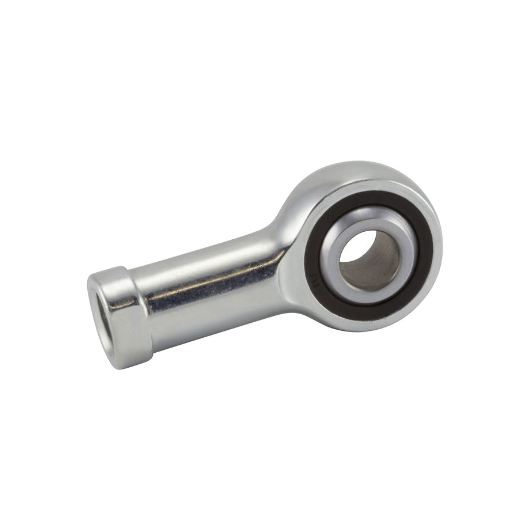
Factors to Consider When Selecting Rod Ends
When selecting rod ends for a specific application, several essential considerations must be taken into account to ensure maximum performance and life. They include:
- Load Capacity and Direction: Judge the magnitude and direction with which the rod end shall be loaded in actual working conditions. Rod ends are generally intended for radial, axial, or combined loads. An incorrect study of this factor can quickly lead to accelerated wear or even failure of the component.
- Material Composition: The material from which the rod end housing and bearing are made determines their performance in a certain environment. For instance, stainless steel components are good for corrosion-resistant applications, whereas alloy steels are better for high-stress conditions.
- Environmental Factor: The operating environment sets forth some additional specifications for rod end selection. Issues might be extreme temperature, humidity, chemical, or vibration. For extreme corrosive or moist environments, rod ends with an additional protective coating or lubricant are recommended.
- Thread Type and Size: The type of threads and their size may be male or female and of different sizes and pitches. Making them compatible with the connected assembly will ensure seamless integration and functional stability.
- Compensate for Misalignment: Where the application requires angular movement, the ability of the rod end to accommodate a certain degree of misalignment becomes important. High misalignment rod ends give more angular travel but keep structural integrity under load.
- Lubrication Requirements: Check for the need of self-lubricating rod ends or requires regular maintenance in your application. For example, the PTFE-lined rod ends operating under dry conditions are low-maintenance and hence suitable for applications where access for lubrication is limited.
- Quality Standards and Certification: The rod ends must be certified to relevant industry standards such as ISO, AS, or DIN, depending on the application. This guarantees their level of reliability and compatibility to ensure safety test standards for critical systems.
By sorting through all these factors and/or consulting with manufacturers or technical experts, you’ll be able to identify a rod-end design suitable for the application in the required mechanical and environmental context while providing the best possible performance and long service.
The Importance of High-Precision Rod Ends
High-precision rod ends serve an important function in systems requiring exact motion control, durability, and safety. They are specially designed to provide superior performance under very high load conditions, extreme ambient temperatures, and repeated impact. Aerospace, automotive, and manufacturing industries attest to the engineering integrity of rod ends for safety and operational efficiency.
One advantage of high-precision rod ends is that they maintain the variation of exact alignment and misalignment in a dynamic system. In aerospace, large vibrations and loads are exerted on the rod ends. Hence, these components can stand such demanding conditions of precise machining and fine materials, like stainless steel or some special alloys. Further designs of the rod ends have extremely long life due to self-lubrication, with corrosion resistance in their finish, needing minimal maintenance.
From a performance perspective, high-precision rod ends reduce gross friction and improve energy efficiency and smoothness of motion in mechanical assemblies. Their adaptability to a range of harsh environments, such as water, chemicals, or abrasive particles, shows their wide utility across numerous industries. Ultimately, investing in precision-engineered rod ends reduces equipment failure risk, improves system accuracy over the period, and enhances operational value in the long run.
Adjustability and Precision Articulating Joints
Adjustability and precision are, therefore, two aspects deemed quite vital within articulating joints, more so for the modern engineering and industrial applications demanding utmost accuracy and flexibility from the components. Such joints are specifically designed to optimize load transfer while allowing multiple degrees of freedom. Whether in robotics, aerospace systems, or automotive designs, articulating joints must weigh their structural capability to withstand stress against their motion capacity. The design of articulating joints would thus require advanced materials like reinforced steel alloys or engineered thermoplastics that can resist stresses incurred during operation and ensure a longer service life even when subjected to harsh environments.
In terms of technology, the articulating joint is configured in such a manner that adjustments can be made by the users to refine joint performance, depending on the system requirements. This may involve constraints on rotation, torque resistance modification, or altering the connection geometry for the desired motion output. The versatility is applied highly in dynamic applications such as robotic arms, where continuous movement and precise positioning are considered to be paramount. For instance, modern robotic articulating joints typically contain position sensing and microcontroller systems that provide real-time feedback for improved accuracy and control. This level of sophistication gives a high-tech makeover to the articulation design and application in any high-end precision setting.
These methods offer the possibility of rendering designs that have a high degree of detail and some measure of complexity with stringent tolerance needs for system integration. Together with surface coating processes such as anodizing or PTFE (polytetrafluoroethylene) layering, they raise the strength of the joints against wear and limit friction for a smoother working lifecycle. Statistical analysis taken from industry reports shows a clear rise in the employment of precision-engineered joints across various industries to capitalize on mechanical performance and system efficiency. Thus, articulating joints in metamorphosis mode ever since, with adjustability, precision, and durability being embodied within.
Applications of Rod End Bearings in Various Industries
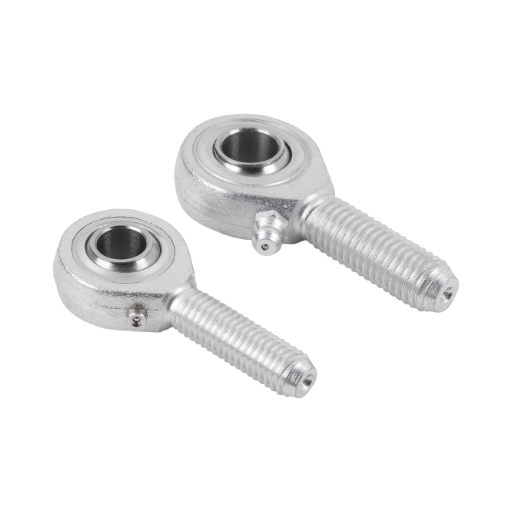
Role of Rod End Bearings in the Aerospace Industry
The aerospace industry imparts a precise and needful motion control function to rod end bearings, which thus must be very accurately manufactured. They must function in environments comprising heavy vibrational loads, temperature variations, and severe mechanical stresses to deliver in safety-critical applications. Below are five uses of rod end bearings done within the aerospace industry:
- Flight Control System: The rod end bearings are employed at the connection points for flight control surfaces like ailerons, rudders, and elevators. They have to provide adequate articulation to handle dynamic loads and allow free movements during the flight maneuvers.
- Landing Gear Assemblies: The bearings are used in the landing gear mechanism and absorb huge impact forces during takeoff, taxiing, and landing operations. They stand to be worthy of their application due to their high load-bearing capacity and durability under heavy demands.
- Engine Linkages: Rod end bearings ensure throttle linkages and control mechanisms in aerospace engines. Precise alignment and movement guaranteed by the bearings are essential in achieving efficient engine performance.
- Hydraulic and Actuation Systems: Rod end bearings form a crucial link between hydraulic systems and actuators for accurate transmission of motion. They contribute to the reliability and efficiency of hydraulic-operated components such as flaps and spoilers.
- Cabin and Structural Adjustments: Bowden bearings are used for cabin systems, including seating adjustments, panel supports, and structural connections. Their versatility and compact design make for easy implementation in confined spaces.
With rod end bearing deployment in the aforementioned critical areas, the aerospace industry attains the qualities of enhanced precision, lower wear-and-tear rate, and longer service life under harsh operating conditions.
Use of Rod End Bearings in Automotive and Aerospace
Because of their angular motion capability, friction diminution, and their capacity to withstand high stresses, rod ends are bearings for the automotive and aerospace environment. In the automotive world, these bearings work as essential elements in steering linkages, suspension setups, and drivetrain assemblies. Being heavy in build, they allow for exact mechanical alignment of various systems while at the same time being subjected to extreme vibrations, loads, and weather conditions. In contrast, in the case of heavy-duty off-road vehicles, rod-end bearings guarantee stability and durability over harsh terrain, while solutions to enhance responsiveness and maneuvering are provided for rod-end bearings for high-performance sports cars.
In aerospace applications, rod end bearings are essential for control systems, landing gear assemblies, and engine assemblies. These bearing types provide the best support in oscillatory and linear motion so that the control surfaces of the ailerons, rudders, and elevators operate without a hitch. The enormously high performance requirements and reliability of the aerospace industry pushed the development of advanced materials such as corrosion-resistant alloys and self-lubricating liners that significantly improve the service life and operational efficiency of rod end bearings.
Higher-end composites and precision engineering enable rods to be implemented in an optimized manner for today’s requirements with an enhanced strength-to-weight ratio and low maintenance. This further complements the industry’s direction toward optimizing efficiency primarily by trimming down the weight in automotive and aerospace designs. With innovations continuing, rod end bearings shall remain the tool to bridge mechanical excellence and operational safety in these highly technical areas.
Industrial Machinery and Rod End Bearings
The evolution of rod end bearings as a necessity for industrial machinery from their insertion fields is largely influenced by the advances in engineering and material sciences. These precision components combine a spherical bearing interface with a strong casing to allow smooth articulation and transfer of motion within mechanical systems. Modern rod ends are made of high tensile material such as alloy steels or stainless steel and, in some cases, have a coating of self-lubricating materials like PTFE composite liners to reduce friction and wear on loads.
One of the technical advantages of modern rod ends is the ability to allow multi-directional motion while retaining rigidity under an applied load. Such rod ends act as correctors of alignment in robotic arms used in automated systems, hence making the processes more precise, as well as reducing stress concentrations on the mating components. For heavy-duty equipment, such as that used in construction, the accommodation of misalignments renders these rod ends resilient in operations.
Emerging and rising applications in the aerospace and automotive sectors, where demand for lightweight components never compromises durability. These precisely engineered bearings are designed for lightweight with improved dynamic load rating, sufficient to meet the standards imposed by next-gen machinery. Since the trend leans toward sustainability and efficiency, rod end bearings become a key component in contributing to the longevity of equipment while consuming less energy, thereby promoting the global trend.
Maintenance and Care for Rod End Bearings
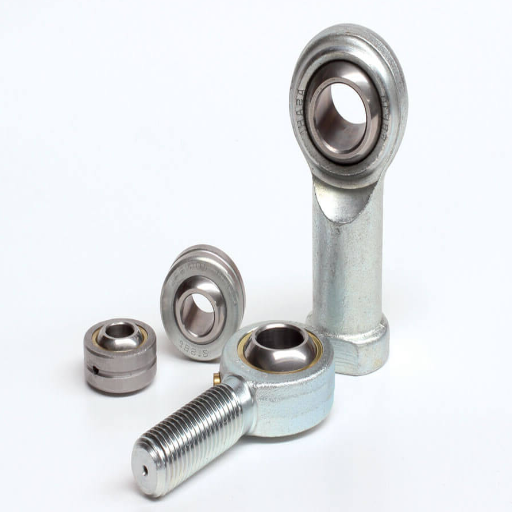
Proper Lubrication of Rod Ends
Lubrication is a crucial step in the maintenance of any rod end bearing to ensure better performance and service life. Lubricants minimize wear by decreasing friction between mating surfaces during metal-to-metal contact and also aid in corrosion protection in harsh operational environments. The selection of the proper lubricant depends on conditions such as load, speed, temperature, and the presence of contamination.
A grease lubricant, for instance, is employed in industrial machinery because it remains in place under heavy loads; oil lubricants, on the other hand, would provide efficiency in heat dissipation needs. It becomes very important to have a regular inspection in place and the timely replenishment of the lubricant if its state degrades through oxidation or contamination.
Nowadays, self-lubricating rod ends with PTFE liners or other engineered materials are becoming more popular in applications that require reduced maintenance, although there needs to be suggested maintenance on these as well to ensure conformance to performance criteria. Proper lubrication strategy ensures not just component life but also lessened downtime of operation and efficient working of the overall system.
Understanding Environmental Conditions and Their Impact
Generally, environmental conditions play an important role in the performance and longevity of any mechanical components. Changes in environmental parameters can cause early deterioration, changes in the properties of materials, and inefficiency in a system. Listed below are five environmental conditions and their detailed impacts:
- Temperature Fluctuations: Extreme heat or cold may be detrimental to certain physical properties of materials, about ductility, hardness, or tensile strength. On the other hand, metals are subject to changes in volume with temperature changes, thus suffering dimensional instability and possible dislocation of components. High temperatures may reduce the load capability of PTFE liners, while extremely low temperatures may make the materials brittle.
- Humidity and Moisture Levels: High levels of humidity or direct exposure to moisture will cause corrosion to the ferrous metal and its alloys. Components made from carbon steel, for instance, are highly susceptible to rust in a moist environment unless subjected to some protective coating application. Excess moisture adversely affects the lubricant film layers, increasing friction and decreasing efficiency.
- Chemical Exposure: Chemicals with prolonged contact, such as acids, alkalis, or solvents, tend to erode or corrode the materials from which the components are manufactured. PTFE resists most chemicals; however, it can be degraded by certain reactive agents over time. The compatibility of the material with the chemistry of the environment has to be ensured for optimum performance.
- Particulate Contamination: Dust, sand, or other airborne particulates enter through the moving parts, causing abrasive wear and consequently loss of integrity in the system. Contaminants can also jam lubrication paths, reducing lubrication efficiency and thereby increasing chances of overheating and mechanical failure.
- Vibration and Mechanical Shock: Environments of continuous vibrations or sporadic mechanical shocks cause metal fatigue and reduction of precision in moving parts, while also loosening some of the components. Ultimately, the dynamic action can lead to an increase in wear, misalignment, or unrecoverable damage.
Recognizing and mitigating these environmental factors is a prerequisite to allowing optimal functioning and milliseconds of any mechanical system. Employing measures in material selection, special coatings, and meticulous environmental monitoring can assure the relative improvement in long-term life.
Signs Your Bearing Must Be Replaced
Bearings impart functionality in mechanistic systems, keeping them smooth and efficient, and their failures could mean unnecessary delays and expensive repairs. Bearing early symptoms should be identified before major symptoms appear. The most common symptoms are discussed below, indicating the bearing needs replacement:
- Unusual Noises: Such sounds, ranging from grinding to squealing to knocking noises, are a call of attention owing to excessive wear, contamination, or simply the lack of lubrication. The extent of such ominous noises increases with time as the bearings continue to deteriorate.
- Excessive Vibration: Abnormal vibrations in a machine or system might hint at one of the symptoms of bearing failure. Misalignment, surface fatigue, and deformation in the bearing disrupt smooth rotations and hence reduce the vibration levels.
- Overheating: Hot to the touch, the bearing will be a sign of possible failure of lubrication, overloading, or insufficient clearance in the housing. Higher temperatures speed bearing wear, leading to abrupt failure.
- Visible Damage or Corrosion: During a physical inspection of the bearing, if you notice cracks, pitting, discoloration, or rust, it would be a clear sign of deterioration. Corrosion stands for a compromise with the bearing material integrity and is generally induced by moisture ingress or chemical exposure.
- Reduced Operating Efficiency: The first clue of a reduction in operating efficiency of machines-observed as reduced speeds or torques-can sometimes be traced to bearing trouble. Increasing friction or internal damage tends to curb the bearing function.
- Leakage of Lubricant: There may be visible leaks from places around the bearing housing. This leakage can adversely affect bearings; contamination gets trapped in them. This could lead to a worsening of the detrimental situation.
- Changes in Rotational Accuracy: Internal wear or defects in bearing elements may be the reason the bearing is no longer rotating smoothly or has developed a noticeable wobble.
Ignoring these symptoms results in an increasing level of damage to other components, such as shafts, housings, or gears. With the help of your maintenance department, set up a routine inspection schedule and utilize predictive maintenance tools like vibration analysis, thermography, and lubrication analysis to pick up bearing problems early and ultimately enhance the life of your equipment.
Understanding the Types of Rod End Bearings
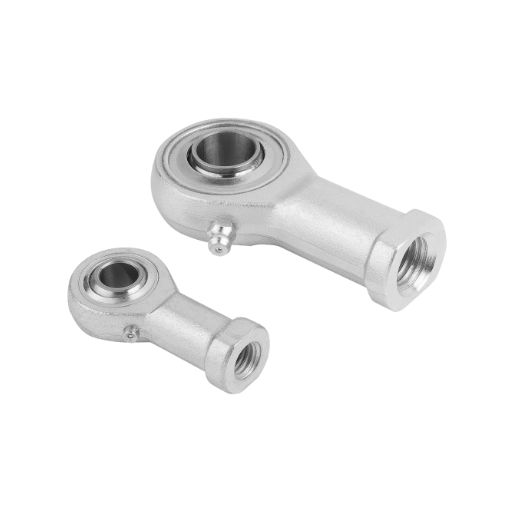
Differences Between Male and Female Rod Ends
Rod ends that are male have the threads on the exterior for insertion, while rod ends that are female have threads on the interior for receiving the components.
|
Aspect |
Male Rod Ends |
Female Rod Ends |
|---|---|---|
|
Threading |
External |
Internal |
|
Structure |
Solid shaft |
Hollow shaft |
|
Purpose |
Insert into |
Receive components |
|
Usage |
Moving parts |
Fixed mounts |
|
Thread Direction |
Left-hand |
Right-hand |
Exploring Threaded Shaft Variations
Threaded shaft variations in rod end bearings are important for ensuring compatibility with application and mechanical system requirements. Generally, these variances fall under thread type, size, and direction. Common thread types include metric and Unified National (UN) threads, following international and regional standards to maintain uniformity in manufacturing and assembly.
Thread sizes are defined by nominal diameter and thread pitch and are often chosen based on load requirements and space constraints within the system. For example, fine pitches grant better clamping force and loosening resistance under vibrational forces, thus suited for precision applications. Coarse pitches, on the other hand, are simpler to assemble and fit better with heavy-duty or high-torque applications. Right-hand and left-hand types are being offered as well. Choice is based on the dynamic forces acting upon the bearing to avoid unintentional loosening during operational motion.
Advanced manufacturing technologies have also permitted custom threaded shaft solutions, enabling the designer to incorporate features such as a self-locking mechanism or a corrosion-resistant coating. Such features increase the rod ends’ durability and reliability in environments subjected to extreme stress, temperature changes, or chemical exposures. Proper choice and understanding of threaded shaft characteristics will thus set forth optimum mechanical performance, less maintainability, and a longer service life for the connected parts.
Applications of Spherical Bearings and Rod Ends
Spherical bearings and rod ends, being able to allow alignments, resist friction, and bear all sorts of dynamic loads, are used widely in various industries and applied in all mechanical systems that require precision and long life. Well, listed below are some common areas that detail the five largest application areas of spherical bearings and rod ends:
- Aerospace Engineering: In its aerospace realm, spherical bearings and rod ends find themselves in the control linkages, landing gears, and wing flaps. Given that they carry a high degree of angular misalignment and can withstand extreme temperatures, they guarantee smooth operation and utmost safety, even under the most grueling flight conditions.
- Automotive Suspension Systems: Most of the uses for spherical bearings and rod ends lie in automotive suspensions, where they enjoy stability and control over angular movement. In racing and high-performance vehicles, for example, spherical bearings grant those fine alignments under extremely high force and vibration.
- Industrial Machinery: Spherical bearings are used in the articulation joints of heavy industrial equipment such as cranes and mining machines. Due to their capability of bearing huge radial and axial loads, they guarantee reliability even when operating in conditions laden with dust, moisture, or heavy impacts.
- Agricultural Equipment: These bearings and rod ends make the daily activities of tractors and harvesters downright easy and smooth. They allow for smooth pivoting motion in the steering system, linkages, and the loader while withstanding the adverse effects of dirt and debris.
- Robotics and Automation: Precision is what characterizes robotic arms and automated machinery, where spherical bearings do their job. They provide an accurate range of motion and can withstand dynamic and repetitive forces, all imperatives to such environments with high-performance and repeatability requirements.
Manufacturers customize the materials and designs of spherical bearings and rod ends to meet the specific requirements of any given application to ensure operational integrity even under the toughest conditions. This versatility has helped their utilization spur innovation in a number of industries.
Frequently Asked Questions (FAQ)
Q: What are ball bearing rod ends, and how are they typically used in industrial systems?
A: Ball bearing rod ends are precision articulating joints that allow for rotational and angular movement. They are typically used in advanced industrial systems where high-precision articulation is required, such as in control rods, steering links, and tie rods.
Q: What is the difference between male and female rod end bearings?
A: Male rod end bearings have an external thread on the shank, while female rod end bearings have an internal thread. The choice between them depends on the application requirements and how the rod end will be mounted.
Q: How does a spherical plain bearing differ from a ball bearing rod end?
A: A spherical plain bearing consists of a spherical ball and a matching outer race, allowing for self-aligning capabilities, whereas a ball bearing rod end includes a precision bearing in the joint that allows for smoother rotary motion and is typically used when a precision articulating joint is required.
Q: In what industries are ball bearing rod ends most commonly used?
A: Ball bearing rod ends are commonly used in industries such as aerospace controls, automobiles, and any industrial systems that require high-precision articulation joints for control rods, steering links, and other components.
Q: Why is a jam nut used with rod ends?
A: A jam nut is used with rod ends to secure the joint in place once it has been adjusted to the desired position. It prevents the rod end from loosening due to vibration or movement.
Q: What are the benefits of using a heim joint, also known as a rose joint, in a mechanical system?
A: Heim joints, or rose joints, offer benefits such as self-aligning capabilities, ease of installation, and the ability to handle both rotational and angular movements, making them ideal for applications where a joint that allows a wide range of motion is necessary.
Q: How do clevis joints work in conjunction with ball bearing rod ends?
A: Clevis joints work with ball bearing rod ends by providing a mounting point that allows the rod end to pivot. This setup is commonly used in control systems where precise angular movement is required.
Q: What factors should be considered when selecting a rod end for a specific application?
A: When selecting a rod end, consider factors such as load capacity, the type of motion required (rotational and angular), environmental conditions, and whether the application requires male or female rod end bearings.
Q: Can ball bearing rod ends be used in both dynamic and static applications?
A: Yes, ball bearing rod ends can be used in both dynamic applications, where they provide smooth rotary motion, and static applications, where they offer precise alignment and load-bearing capabilities.
Q: How are spherical balls and spherical bushings related to rod ends?
A: Spherical balls and spherical bushings are components within rod ends and spherical plain bearings that allow for the self-aligning feature, which is crucial for applications where misalignment might occur, ensuring smooth operation and longevity of the joint.
UCTH213-40J-300 with Setscrew(inch)
CNSORDERNO: Normal-duty(2)
TOGN: UCTH213-40J-300
SDI: B-R1/8
SD: 2 1/2
UCTH212-39J-300 with Setscrew(inch)
CNSORDERNO: Normal-duty(2)
TOGN: UCTH212-39J-300
SDI: B-R1/8
SD: 2 7/16
UCTH212-38J-300 with Setscrew(inch)
CNSORDERNO: Normal-duty(2)
TOGN: UCTH212-38J-300
SDI: B-R1/8
SD: 2 3/8
UCTH212-36J-300 with Setscrew(inch)
CNSORDERNO: Normal-duty(2)
TOGN: UCTH212-36J-300
SDI: B-R1/8
SD: 2 1/4
UCTH211-35J-300 with Setscrew(inch)
CNSORDERNO: Normal-duty(2)
TOGN: UCTH211-35J-300
SDI: B-R1/8
SD: 2 3/16
UCTH211-34J-300 with Setscrew(inch)
CNSORDERNO: Normal-duty(2)
TOGN: UCTH211-34J-300
SDI: B-R1/8
SD: 2 1/8










